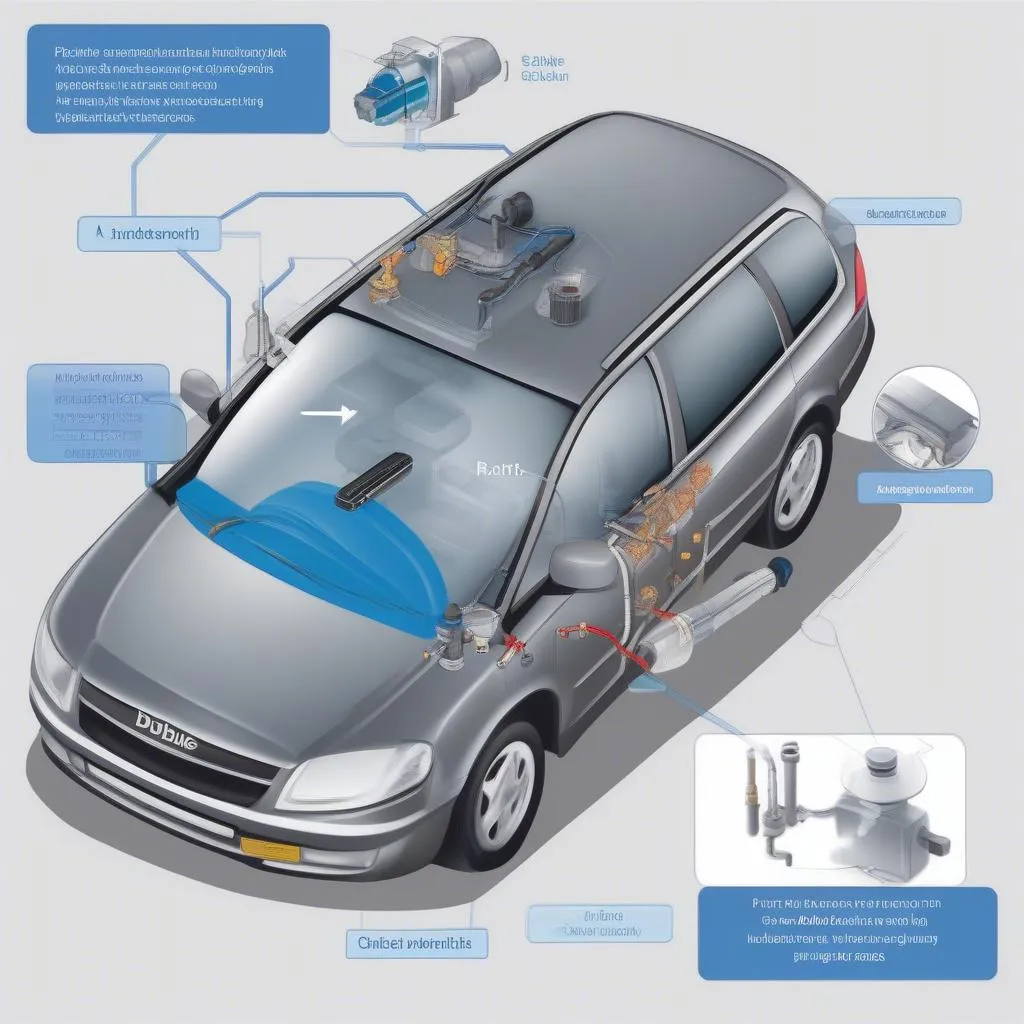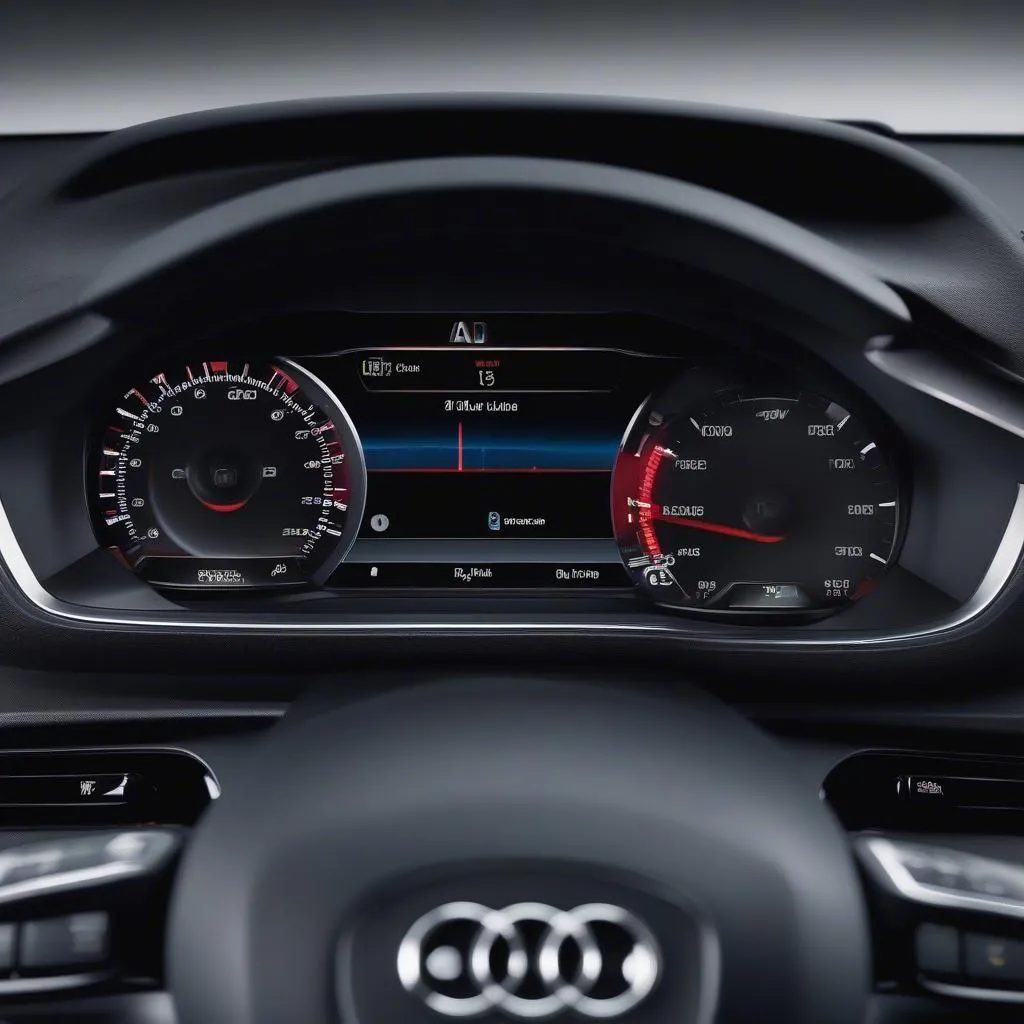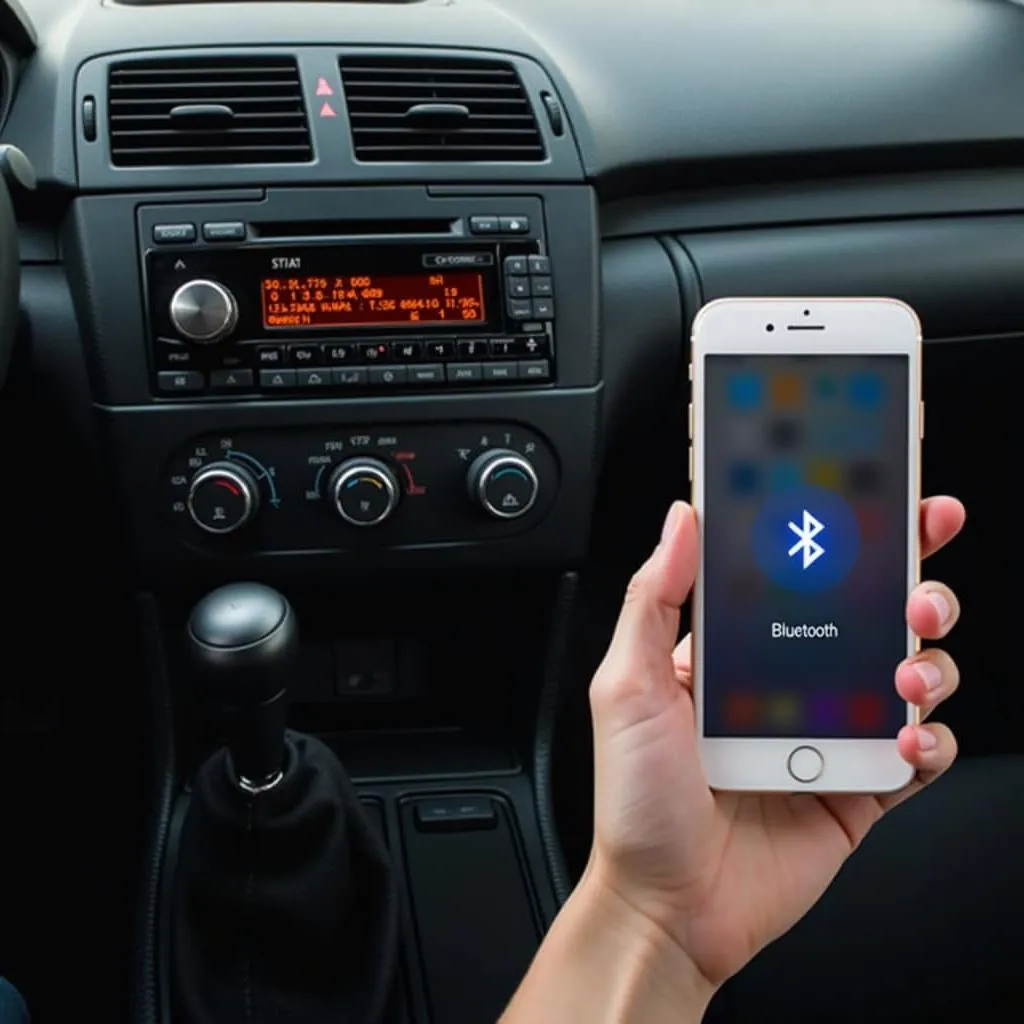Seeing an AdBlue warning light on your Audi Q7’s dashboard can be stressful. Don’t worry, it’s a common issue and often easily resolved. This comprehensive guide will walk you through the causes, symptoms, and solutions for resetting the AdBlue warning in your Audi Q7.
Understanding the AdBlue System
Before we delve into the reset process, let’s understand why the AdBlue system exists. AdBlue, also known as Diesel Exhaust Fluid (DEF), is an essential component of your Audi Q7’s emissions control system. It helps reduce harmful nitrogen oxide (NOx) emissions from your diesel engine, turning them into harmless nitrogen and water vapor.
 AdBlue system diagram
AdBlue system diagram
Why is My AdBlue Warning Light On?
There are several reasons why your AdBlue warning light might illuminate:
- Low AdBlue Level: The most common reason is that your AdBlue tank is running low and needs refilling.
- System Malfunction: A faulty sensor, a problem with the AdBlue injector, or other system errors can trigger the warning light.
- Quality Issues: Using AdBlue that doesn’t meet the required ISO 22241 standard can cause system problems.
How to Identify the Issue
- Check Your Driver Information Display: The display will typically show a message indicating the problem, such as “AdBlue Level Low” or “AdBlue System Fault.”
- Consult Your Owner’s Manual: Your Audi Q7 owner’s manual will have a section dedicated to the AdBlue system, including specific warning messages and their meanings.
 Audi Q7 dashboard AdBlue warning
Audi Q7 dashboard AdBlue warning
What You’ll Need
- AdBlue Fluid: Make sure you purchase AdBlue fluid that meets the ISO 22241 standard.
- Diagnostic Tool (Optional): A diagnostic tool, like those offered by Cardiagtech, can help read and clear fault codes, providing more specific information about the issue.
Resetting the AdBlue Warning
1. Refill the AdBlue Tank:
If your AdBlue level is low, refilling the tank is the first step. You can usually find the AdBlue filler cap near your diesel filler cap.
2. Use a Diagnostic Tool (Recommended):
If the warning light persists after refilling, it’s recommended to use a diagnostic tool. A diagnostic tool can read and clear any fault codes stored in the system.
Expert Insight: “Using a reliable diagnostic tool, like those from Cardiagtech, can save you time and money by identifying the exact issue,” says John Miller, Senior Automotive Engineer at AutoTech Solutions. “It empowers you to address the root cause instead of just treating the symptom.”
3. Seek Professional Help:
If the warning light remains on after trying the above steps, it’s best to consult a qualified mechanic or your Audi dealership. They have the expertise and specialized equipment to diagnose and repair any underlying issues within the AdBlue system.
Frequently Asked Questions
Q: Can I continue driving with the AdBlue warning light on?
A: While you can drive for a limited distance with the warning light on, it’s not recommended. Driving with a faulty AdBlue system can eventually lead to reduced engine performance and may even prevent your car from starting.
Q: How often do I need to refill AdBlue?
A: The frequency of AdBlue refills varies depending on your driving style and conditions. Typically, you’ll need to refill every 5,000 to 10,000 miles.
Q: Can I reset the AdBlue warning myself?
A: While you can sometimes reset the warning by refilling the AdBlue tank, it’s recommended to use a diagnostic tool to ensure all fault codes are cleared correctly.
Conclusion
The AdBlue system in your Audi Q7 plays a crucial role in reducing emissions. Understanding its function and addressing warning lights promptly will keep your car running smoothly and help protect the environment. If you have any further questions or need expert assistance, don’t hesitate to contact CARDIAGTECH for top-notch diagnostic and repair solutions.

